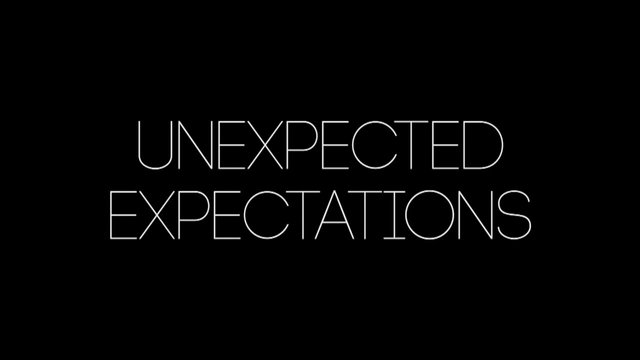Investments in cryptocurrency: Valuation
Investments in cryptocurrency: Valuation
The first part of this series: Investing 101: 5 basic tips for beginners in cryptocurrency, was appreciated by the community, be sure to check it out if you want to review the fundamentals.
Important Disclaimer: I am not a financial advisor or expert and not responsible for any losses you make or gains you don’t make because of this article. Your choices are your own.
In this part, we are going to delve deeper into the valuation of a cryptocurrency. It’s hard to put cryptocurrency in an asset class. There is a wide range of crypto’s out there and they differ significantly.

The source of value
You could argue that cryptocurrency behaves as a currency (what’s in a name, right?). There is a big difference in the fundamentals. If you look at the main source of a standard cryptocurrency, you’ll find out there is scarcity involved. Most cryptocurrencies have a max mineable/producible amount of tokens they can mine. If you compare this to normal currency there is a big difference, since money can be printed when necessary.
A commodity like gold would be a better fit in this case since there is scarcity but it’s still able to facilitate a transaction and there are production costs. But does gold produce anything in rest, does it have an output besides supply and demand?
If you would say that cryptocurrency behaves like a stock, it is more of an entity with utility than just a facilitator of a transaction. Sure there are tokens out there which actually produce something. STEEM produces great content all day long. The tokens can be traded, but facilitating transactions isn’t the main goal. The main goal is to produce awesome content.
This puts cryptocurrency in a strange spot, because it can have similar traits as other classes and for crypto it overlaps.

Valuation of an investment
“The price is what you pay. Value is what you get.”
Warren Buffet
In order to determine if something is a sound investment you identify if the price that you have to pay makes up for the value that you get in return. So how do you know if the value of a cryptocurrency justifies the price? For stocks, the following formula plays a central role in the valuation of the price.
P0 = EPS/r + PVGO
With: P0 = price, EPS = earnings per share, r = discount rate, PVGO = Present Value of Growth Opportunities.
If you just got scared of this formula, don’t worry, it’s will only be used as an example. Basically what this means is that the price of a stock is based on two components: intrinsic value and expected growth.
This is something we can intuitively use for the types of cryptocurrency which produce value. This key point can also be used for cryptocurrency without a clear production of value such as our big brother BTC. In this case, you’ll have to see it as a combination of current supply/demand with future expectations.
It thus gives us a good reference point in knowing whether something is traded on intrinsic (underlying) value or if it’s based on expectations.
So how can you actually use this?
It’s very important to know where the value comes from before you invest. Is the main part provided by current performance or is it based on expectations?
Let’s give some examples:
The intrinsic value of STEEM would be the increasing number of active users. While the growth opportunities would be expectations about a steady increase of users by viva voce marketing.
The intrinsic value of an ICO, e.g. EOS would be
the team which has a lot of experience while the value of expectations would be the number of apps build on EOS.
The intrinsic value of BTC would be the supply/demand as well as being one of the few coins with an enormous amount of trading pairs. The value of expectations would be the average weighted expected value of the results of the UASF on 1 August.

Expectations cost money
If a lot of people expect that the growth opportunities of an investment are very high, you pay for them.
If Someone tells you “ Buy X now, because the growth opportunities are GREAT” This sounds great, doesn’t work that way.
Why doesn’t a general consensus on growth opportunities mean that it's a great deal to buy this crypto?
Either the general view is WRONG and you lose money on the investment because expectations weren't met.
OR
The general view is RIGHT, BUT the growth opportunities were expected and thus you paid for them when you bought them.
This means that if the value of an investment is largely based on expectations (it is hyped).
- you automatically pay more
- there is no/little intrinsic value to back it up if things aren’t as expected.
This is exactly what makes investing ICO a great way to lose all your money or generate tremendous returns. If a lot of value is based on expectations, the investment is seen as risky. The risk/reward theory tells us that if things get riskier, the potential upside/downside gets higher/lower.
How do I not pay for the expected value?
In order to not pay for the expected value, you can invest in something where you expect a lot of value, but the general public hasn’t seen it yet.

Expectations change over time
Expectations change over time, thus the value of these expectations also change. This can happen in two ways, since expectations are subjective:
- More/less people expect the same expectation
- Because of an event, people expect more/less
Just because more people expect something (they heard something from a friend), doesn’t mean that the expectation is justified and this is how bubbles are made.
People with no knowledge start to act as a herd and if things go slightly south-ways, they will panic.
Why do they panic?
They based their valuation purely on other people's expectations and have no knowledge of the intrinsic value. In their mind, they see their investment completely disappearing, because expectations weren’t met in the short term and there is no underlying value.
Conclusion
Be aware that your valuation is based on intrinsic value and expectations.
Be aware of the effect of other people’s expectations.
Did you like this article?
Be sure to support me by giving an upvote.
Resteems are highly appreciated.
If you have any questions or comments, let me know in the comments below!
Thank you for reading - @patcher
Upvoted ! Excellent Article. In the next article, if you could add the following contents that would be great
Supply v/s Demand
How much supply is currently available ?
Why would demand increase ?
How much more investor base would be added ?
Real time tracking of user base increasing ?
Value in terms of fiat currency saved / time saved / automation etc..
Overall, a great start
Hey @dipkumar , I am very excited about all the suggestions you gave for future topics. These are great suggestions! If I have a question about the setting of a topic I'll let you know!
Another awesome post. My understanding of crypto currency is fuller thanks to these posts
Thanks @gmuxx , you're too kind!
Thanks for a very nice post
Thank you for reading it!
Congratulations! This post has been upvoted from the communal account, @minnowsupport, by patcher from the Minnow Support Project. It's a witness project run by aggroed, ausbitbank, teamsteem, theprophet0, and someguy123. The goal is to help Steemit grow by supporting Minnows and creating a social network. Please find us in the Peace, Abundance, and Liberty Network (PALnet) Discord Channel. It's a completely public and open space to all members of the Steemit community who voluntarily choose to be there.
If you like what we're doing please upvote this comment so we can continue to build the community account that's supporting all members.
Ok this is a very well put together article with great advice !
I couldn't emphasis on this more
Thank you @kingmotan , you are absolutely right it is very often forgotten that you pay for obvious opportunities.
Nice post. I'm getting there but I'm also a little lost on one point.
You say that steem produces good content, but doesn't good content produce steem? I'm trying to match it to models I've known in the past and that's perhaps where I'm going wrong.
It's also possibly mixed in my head because having steem doesn't mean you will get good content (it's not like a machine that prints content each day based on how invested you are) though I guess having more steem power does give you more control over the style/quality/topics of the content. (Perhaps why there's so much crypto content on steemit?)
I've never played live markets before but I have dabbled in realistic game markets (for example Eve Online's market is entirely player driven) so it's just a case of adapting my knowledge to crypto.
Hey @stormriderstudio , you make a valid point. I'd say that Steem is produced whether there is good content or not. Newly produced steem could go to witnesses or interest. My second point is that you can earn Steem by producing outstanding content, so the promise of Steem makes people create good content. Great content is thus a result of the potential Steem payout. It's not the case that Steem itself produces great content ofcourse, it's the willingness of people. Thanks for reading the article and commenting!